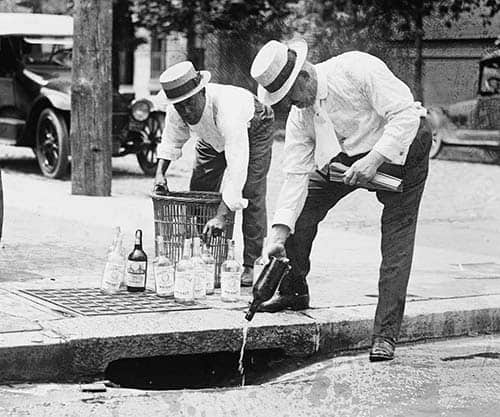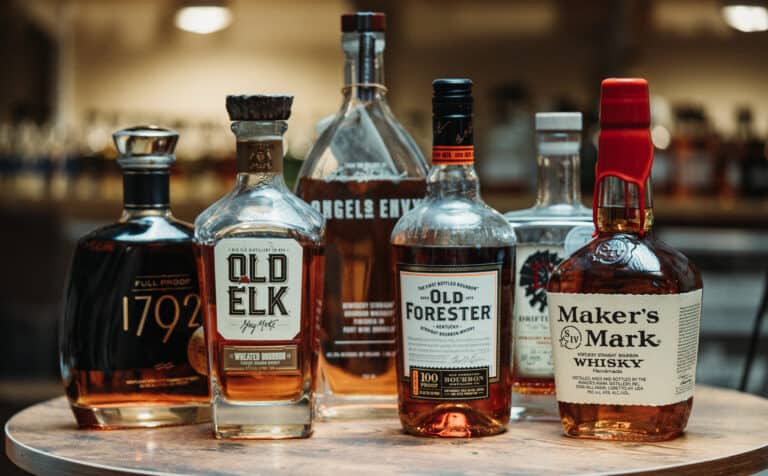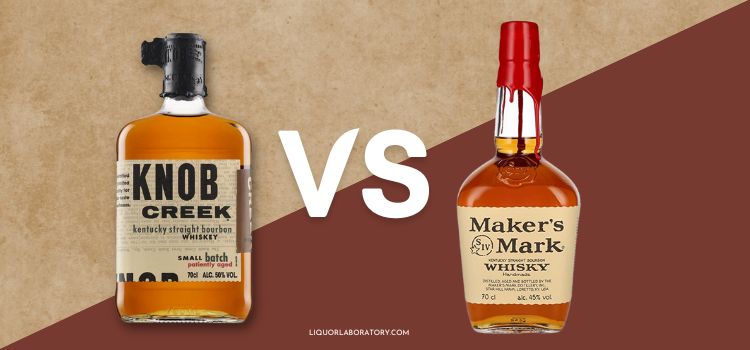Geographical Indications and Regions of American Whiskey and Bourbon
American whiskey and bourbon are celebrated worldwide for their rich flavors and unique characteristics, which are influenced significantly by the regions in which they are produced. This article delves into the geographical indications and regions that define American whiskey and bourbon, exploring the key states and the impact of geography on the flavor profiles of these beloved spirits.

Regions Known for American Whiskey
Key Whiskey-Producing States
Kentucky
Kentucky is synonymous with American whiskey, particularly bourbon. The state’s limestone water is often credited with providing the perfect mineral balance for whiskey production. This unique feature, combined with the fertile soil and favorable climate, makes Kentucky the heart of bourbon country. The state’s distilleries produce a significant portion of the world’s bourbon, with notable brands like Jim Beam, Maker’s Mark, and Woodford Reserve originating here.
Kentucky’s distilleries take pride in their deep-rooted traditions and centuries-old recipes. The state has also established the Kentucky Bourbon Trail, a popular tourist attraction that allows visitors to tour some of the most famous distilleries and learn about the history and process of bourbon making. The trail not only highlights the production process but also showcases the cultural significance of bourbon in Kentucky. Visitors can experience tastings, distillery tours, and events that celebrate bourbon’s rich heritage.
In addition to its large, well-known distilleries, Kentucky is home to numerous craft distilleries that contribute to the state’s diverse whiskey landscape. These smaller operations often experiment with unique mash bills, aging techniques, and local ingredients to create distinctive bourbons that reflect the character of their specific region within Kentucky. The state’s commitment to preserving traditional methods while embracing innovation ensures that Kentucky remains a leader in the whiskey industry.

Tennessee
Tennessee is another key player in the American whiskey landscape, known primarily for its Tennessee whiskey. While similar to bourbon, Tennessee whiskey undergoes an additional step called the Lincoln County Process, where the whiskey is filtered through charcoal before aging. This process imparts a smoother, mellower flavor to the whiskey.
Jack Daniel’s, the world’s best-selling American whiskey, is produced in Lynchburg, Tennessee. The state’s whiskey industry benefits from its own unique limestone water and climate, which contribute to the distinctive character of Tennessee whiskey. The process and regional ingredients used in Tennessee whiskey production distinguish it from other American whiskeys.
In addition to Jack Daniel’s, Tennessee is home to other notable distilleries such as George Dickel, which also adheres to the Lincoln County Process. These distilleries emphasize the importance of tradition and craftsmanship in their whiskey-making practices. Tennessee’s whiskey heritage is deeply rooted in its culture, and the state continues to be a significant contributor to the American whiskey industry.
The growth of craft distilleries in Tennessee mirrors the trends seen in Kentucky, with many smaller producers focusing on high-quality, artisanal whiskeys. These craft distilleries often experiment with different grain combinations, aging conditions, and finishing processes to create unique expressions of Tennessee whiskey. The combination of established brands and innovative newcomers ensures that Tennessee remains a dynamic and influential region in the world of American whiskey.

Other Notable States
While Kentucky and Tennessee dominate the American whiskey scene, other states have also made their mark. Indiana, for example, is home to several large distilleries, including MGP Ingredients, which produces whiskey for numerous brands. MGP is known for its high-quality rye whiskey, which has gained a reputation for its spicy, robust flavor profile. The distillery’s expertise in rye production has made Indiana a key player in the American whiskey industry.
New York and Texas are emerging as significant whiskey producers, each bringing their regional characteristics to their products. New York’s craft distilleries often emphasize locally sourced ingredients, reflecting the state’s diverse agricultural landscape. The Hudson Valley, in particular, has become a hub for artisanal whiskey production, with distilleries like Tuthilltown Spirits and Hillrock Estate Distillery leading the way. These producers focus on creating small-batch, high-quality whiskeys that showcase the unique terroir of the region.
Texas distillers take advantage of the state’s hot climate to accelerate the aging process, resulting in bold, robust flavors. The extreme temperature variations in Texas cause whiskey to expand and contract within the barrels more rapidly than in cooler climates, leading to faster maturation and intense flavor development. Distilleries such as Garrison Brothers and Balcones are known for their innovative approaches and distinctive Texan whiskeys. The use of locally sourced grains and unique aging techniques further enhances the regional character of Texas whiskey.
Other states, such as California, Colorado, and Washington, are also contributing to the diversity of American whiskey. These regions bring their own unique climates, ingredients, and distillation practices to the table, creating a rich tapestry of flavors and styles. The rise of craft distilling across the United States has led to a renaissance in American whiskey, with producers from coast to coast exploring new possibilities and pushing the boundaries of tradition.
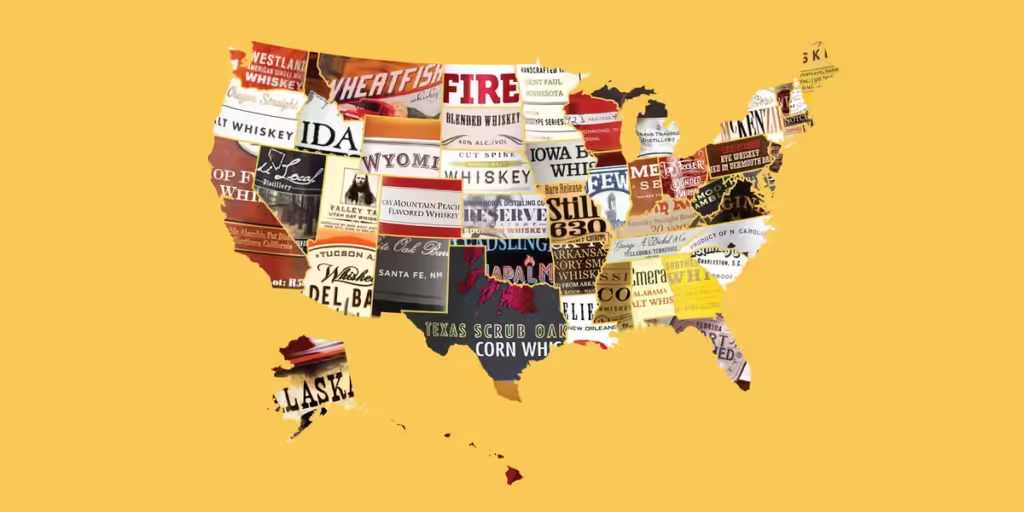
Regions Specific to Bourbon
Bourbon County, Kentucky
Bourbon County in Kentucky holds historical significance as the namesake for bourbon whiskey. Although not the only place where bourbon is produced, this region remains central to bourbon’s heritage. The area’s fertile land and access to limestone water make it an ideal location for whiskey production. Many of the early settlers in Bourbon County were of Scots-Irish descent, bringing with them a tradition of distilling that would eventually lead to the creation of bourbon.

The history of bourbon in Bourbon County is rich and storied, with many of the original distilleries dating back to the 18th and 19th centuries. These early distillers utilized the abundant natural resources and favorable conditions of the region to produce whiskey that quickly gained popularity. The bourbon produced in Bourbon County became synonymous with quality, and the name “bourbon” was adopted to describe this distinctive style of whiskey.
Today, Bourbon County continues to play a vital role in the production and promotion of bourbon. The region is home to several historic distilleries that have been producing bourbon for generations. These distilleries maintain the time-honored traditions and techniques that have defined bourbon production for centuries. In addition to the established distilleries, new producers are emerging in Bourbon County, bringing fresh perspectives and innovations to the industry.
The significance of Bourbon County extends beyond its borders, as the region’s influence can be seen in bourbon production across Kentucky and beyond. The legacy of Bourbon County is a testament to the enduring appeal and cultural importance of bourbon whiskey.
The Kentucky Bourbon Trail
The Kentucky Bourbon Trail is a hallmark of the bourbon industry, offering enthusiasts a comprehensive experience of bourbon production. This trail spans multiple distilleries, each with its own unique history and production methods. Visitors can explore everything from small, craft operations to large-scale producers, gaining insights into the art and science of bourbon making. The trail not only highlights the production process but also showcases the cultural significance of bourbon in Kentucky.
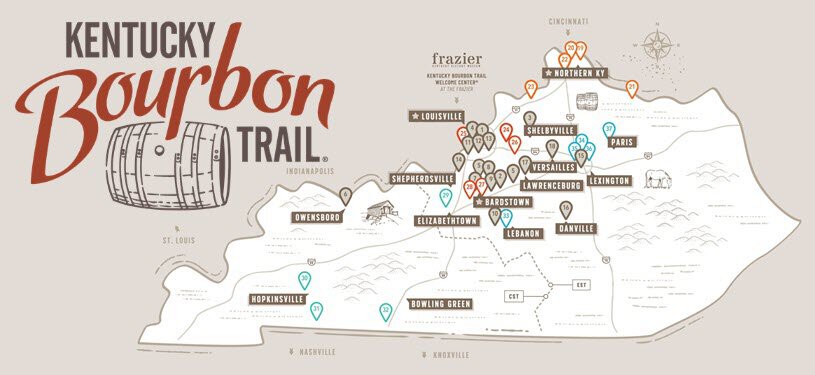
The Kentucky Bourbon Trail was established in 1999 by the Kentucky Distillers’ Association to promote the state’s bourbon industry and attract tourism. The trail includes a variety of distilleries, from iconic names like Jim Beam and Wild Turkey to smaller, craft producers like Willett and Limestone Branch. Each distillery offers guided tours, tastings, and educational experiences that provide a deeper understanding of bourbon production.
Visitors to the Kentucky Bourbon Trail can learn about the entire whiskey-making process, from the selection of grains and the mashing process to fermentation, distillation, aging, and bottling. The trail also emphasizes the importance of Kentucky’s unique geography and climate in shaping the flavor of bourbon. The interaction between the whiskey and the charred oak barrels during aging is a key focus, as this process imparts the rich flavors and deep colors that are characteristic of bourbon.
In addition to the educational aspects, the Kentucky Bourbon Trail offers a cultural and historical journey through the heart of bourbon country. The trail passes through picturesque landscapes, charming small towns, and vibrant cities, each with its own connection to bourbon heritage. Many of the distilleries along the trail have deep historical roots, with buildings and equipment that date back to the early days of bourbon production.
The Kentucky Bourbon Trail has become a major attraction for bourbon enthusiasts and tourists alike, drawing visitors from around the world. It provides a unique opportunity to experience the rich history, craftsmanship, and innovation that define Kentucky bourbon. The trail also highlights the economic and cultural impact of the bourbon industry on the state of Kentucky.
Impact of Geography on Flavor
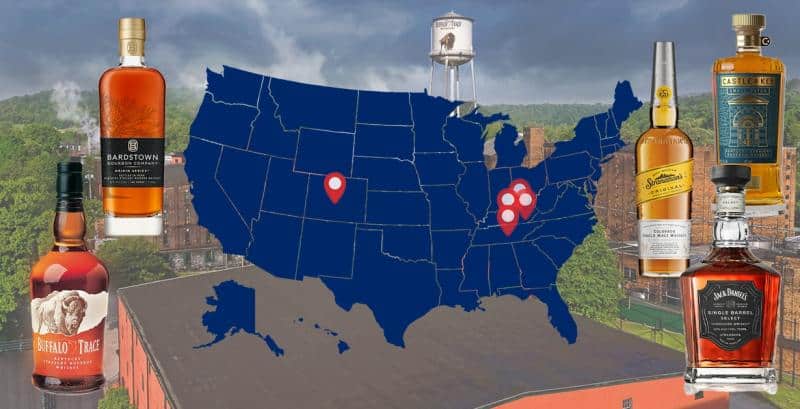
Climate and Terroir
The flavor of American whiskey is deeply influenced by the climate and terroir of the regions where it is produced. Kentucky’s hot summers and cold winters create a unique aging environment. The temperature fluctuations cause the whiskey to expand and contract within the barrels, allowing it to interact more deeply with the wood. This interaction is crucial for developing the rich, complex flavors characteristic of Kentucky bourbon.
The limestone-rich soil in Kentucky also plays a significant role in the flavor profile of bourbon. The limestone acts as a natural filter for the water used in whiskey production, removing impurities and adding beneficial minerals. This “limestone water” is a key ingredient that contributes to the smoothness and quality of Kentucky bourbon.
In Tennessee, the climate is similar to Kentucky, but the state’s whiskey benefits from the additional step of the Lincoln County Process. This charcoal mellowing process, combined with the region’s natural resources, gives Tennessee whiskey its distinct smoothness and depth of flavor. The specific type of wood used for the charcoal, typically sugar maple, also adds unique characteristics to the whiskey.
Texas distillers take advantage of the state’s hot climate to accelerate the aging process, resulting in bold, robust flavors. The extreme temperature variations in Texas cause the whiskey to expand and contract within the barrels more rapidly than in cooler climates, leading to faster maturation and intense flavor development. The use of locally sourced grains and unique aging techniques further enhances the regional character of Texas whiskey.
In emerging whiskey regions like New York and California, distillers are exploring the impact of their unique climates and terroirs on whiskey production. The cooler climates in these states result in slower aging, which can lead to more subtle, nuanced flavors. Distillers in these regions often experiment with different types of barrels and aging conditions to create whiskeys that reflect their local environment.
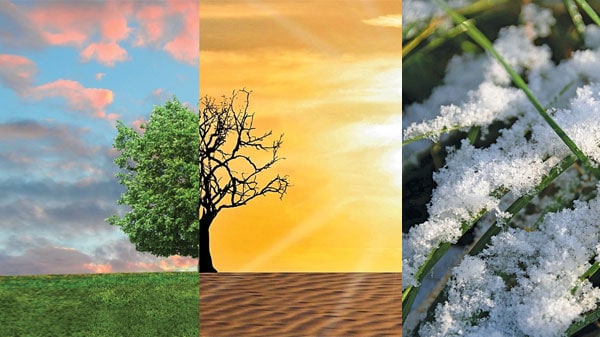
The concept of terroir, traditionally associated with wine, is increasingly being applied to whiskey. Terroir refers to the environmental factors that influence the characteristics of a product, including soil, climate, and geography. In the context of whiskey, terroir encompasses everything from the type of grain used to the specific location of the aging warehouses. This growing appreciation for the impact of terroir on whiskey is leading to a more diverse and interesting range of flavors and styles.
Regional Distillation Traditions
Each whiskey-producing region in the United States has developed its own distillation traditions that contribute to the unique profiles of their whiskeys. Kentucky distillers often stick to traditional methods, using copper stills and adhering to strict bourbon regulations. The use of new, charred oak barrels for aging is a key requirement for bourbon production, and this practice is rigorously followed by Kentucky distilleries. The result is a rich, full-bodied whiskey with a distinctive caramel and vanilla flavor profile.
Tennessee’s Lincoln County Process sets it apart, while other states like Indiana focus on high-rye mash bills to create spicier whiskeys. The Lincoln County Process involves filtering the whiskey through charcoal made from sugar maple wood before it is aged. This step, known as charcoal mellowing, imparts a smoothness and complexity to Tennessee whiskey that distinguishes it from other styles. Tennessee distillers are proud of this tradition and consider it a defining characteristic of their whiskey.
Emerging regions bring their innovative approaches to whiskey production. Craft distilleries in states like New York and Colorado experiment with different grains, aging techniques, and local ingredients, adding diversity to the American whiskey landscape. For example, New York distilleries often use locally grown corn, rye, and barley to create whiskeys that reflect the agricultural heritage of the region. The use of heirloom grain varieties and traditional farming practices further enhances the distinctiveness of these whiskeys.
In Colorado, the high-altitude environment and dry climate create unique aging conditions that influence the flavor of the whiskey. The state’s craft distilleries are known for their creativity and willingness to push the boundaries of traditional whiskey production. Experimentation with different types of wood for barrels, innovative fermentation techniques, and the use of local botanicals are just a few examples of how Colorado distillers are putting their own stamp on American whiskey.
The influence of regional distillation traditions extends beyond the production process to the cultural and historical context of whiskey making. Each region has its own stories, legends, and customs that shape the identity of its whiskeys. This cultural heritage is an important aspect of the overall experience of enjoying American whiskey, as it adds depth and meaning to the flavors and aromas in the glass.

FAQs
Conclusion
The regions known for American whiskey and bourbon, particularly Kentucky and Tennessee, have a profound impact on the flavor and character of these spirits. The unique geographical features, such as limestone water and climate, combined with traditional and innovative distillation practices, create a diverse and rich whiskey landscape in the United States. Whether you’re exploring the Kentucky Bourbon Trail or tasting Tennessee whiskey’s smoothness, the geographical indications and regions play a crucial role in defining American whiskey and bourbon. The rise of craft distilleries across the country further enhances this diversity, ensuring that American whiskey continues to evolve and delight enthusiasts around the world.
Disclosure: Our blog contains affiliate links to products. We may receive a commission for purchases made through these links. However, this does not impact our reviews and comparisons. We try our best to keep things fair and balanced, in order to help you make the best choice for you.


